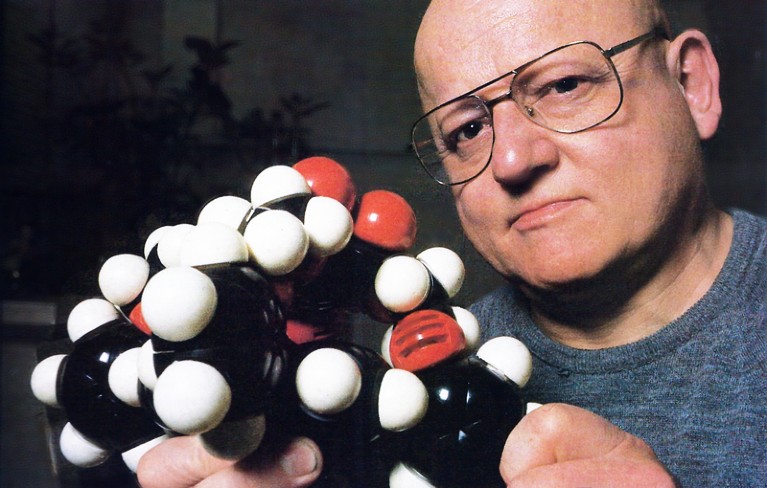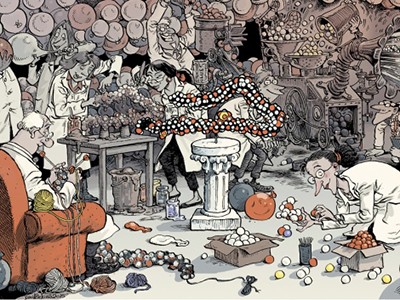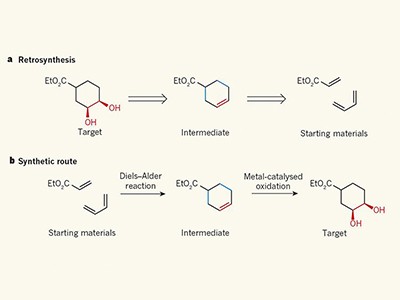
Credit: Andy Lane
“Chemistry,” Jack Baldwin once said in his direct way, “is about making forms of matter that have never existed.” Baldwin was best known for formulating a set of rules that predict how likely it is that atoms (mostly carbon) in a synthesis will link into rings, a structural feature of many biological molecules and drugs. Published in just three pages (with a one-sentence abstract) in 1976 (J. E. Baldwin J. Chem. Soc. Chem. Commun. 734–736; 1976), Baldwin’s rules have been fundamental to organic synthesis in the pharmaceutical and agrochemical industries, and to understanding biology from a chemical perspective. He died on 4 January, aged 81.
His passions also encompassed finding out how nature makes chemicals that researchers cannot. This led him to ‘biomimetic’ synthesis: using the principles of nature to improve the generation of biomolecules in the laboratory. He particularly relished the challenge of ‘molecules from Mars’, his term for natural products whose biosynthesis was baffling.
Baldwin’s interest in rings led him to study antibiotics that contain a β-lactam ring, the best known of which is penicillin. He worked initially with Edward Abraham, who had been part of the team that developed penicillin and who went on to reveal the activity of broad-spectrum antibiotics known as cephalosporins. Baldwin uncovered the mechanistic basis of the enzyme action that catalyses the formation of the two rings at the heart of the penicillin molecule. Others have since found that related enzymes are involved in many biological processes, including how the human body responds to low levels of oxygen.
Baldwin was born in London, and studied chemistry at Imperial College London, where he also did a PhD. He was supervised by Derek Barton, a pioneer of conformational analysis — the idea that the reactivity of a molecule could predict its preferred 3D shape — who later won a Nobel prize. Barton had a major impact on Baldwin’s career.
After four years on the staff at Imperial College, Baldwin spent more than a decade in the United States, working first at Pennsylvania State University in State College and then at the Massachusetts Institute of Technology (MIT) in Cambridge. With an able young team and the latest instruments, his MIT period was particularly productive. To develop a detailed picture of how atoms arrange themselves during organic reactions, he combined theoretical and geometric considerations with structural information. His team obtained this using techniques such as nuclear magnetic resonance and X-ray crystallography. At MIT, he created a class of biomimetic molecule that reversibly binds oxygen when complexed with iron, just as haemoglobin does in the blood, and formulated his rules for ring formation. It was also where he met his future wife, Christine Franchi, who built a career in academic publishing.
In 1978, Baldwin was recruited to head the Dyson Perrins Laboratory at the University of Oxford, UK. As only the fourth person to hold the chair in organic chemistry since the laboratory opened in 1916, he transformed his discipline at Oxford, in terms of both scientific ambition and equipment. Baldwin brought with him researchers from his internationally diverse lab at MIT, and continued to recruit people with a wide range of backgrounds.
Many of his students, who knew him as ‘J.E.B.’, went on to lead research all over the world. The output of his lab was prodigious: he is an author on at least 700 papers. In 1988, he became the founding director of the Oxford Centre for Molecular Sciences, which he headed for 10 years. The centre helped to link physical and biological sciences in Oxford.
The pioneering role of Oxford scientists in the extraction, testing and structural analysis of penicillin during the 1940s inspired Baldwin’s extensive work on trying to make the drug from scratch. His respect for the optimally efficient process by which microbes produce the molecule — even now, most penicillin antibiotics continue to be produced through fermentation — led him further into the field of biomimetic synthesis. His favoured approach for building complex multi-ring structures was to try to mimic nature’s strategy of making a relatively simple linear framework that is predisposed to react to give multiple rings in a single step. The ‘molecules from Mars’ he made using this approach included unusual alkaloids derived from marine sponges and rare rainforest plants.
Baldwin had little time for the academic conventions of Oxford: he spoke his mind, and could seem pugnacious in scientific debate. But his forceful leadership style belied a generosity in his treatment of junior colleagues. Wholly committed to research, he never sought seats on prestigious committees, although his distinction brought many honours, including a knighthood in 1997. He developed links with the chemical industry and championed its role in society, encouraging his students to pursue industrial careers. Aside from science, he enjoyed good food, fine wine, powerful motorbikes, fast cars and his dogs. After he retired in 2005, he continued to co-author publications until just months before his death.



 Chemistry: Why synthesize?
Chemistry: Why synthesize?
 AI designs organic syntheses
AI designs organic syntheses
 Ronald Breslow (1931–2017)
Ronald Breslow (1931–2017)
 Gilbert Stork (1921–2017)
Gilbert Stork (1921–2017)








